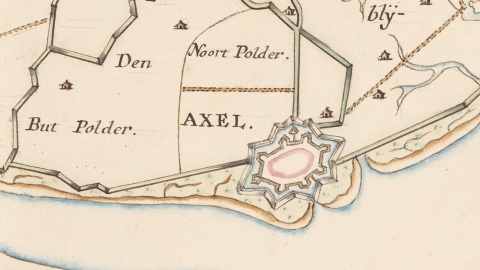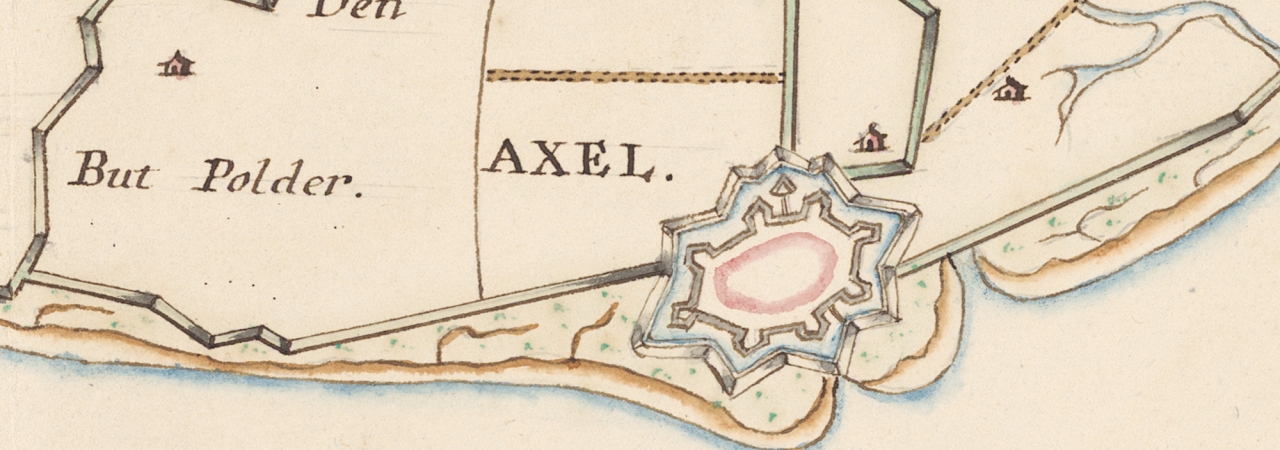In order to counter the attacks of the Sea Beggars, in 1574 a start was made with reinforcing the town of Axel. Canals, embankments and gates were constructed. Nevertheless, that same year, by means of a ruse, the Sea Beggars still managed to enter and embark on plundering the town.
In 1583, Alexander Farnese, the later Duke of Parma, recaptured Axel for the Spanish king. The Spaniards built more fortifications in Axel, but their occupation was short-lived. In 1586, Sir Philip Sidney and Prince Maurits captured the town, which subsequently remained in States hands. The defence works then consisted of an earthen embankment, gates, two bastions and a wet moat.
Due to the threat emanating from the Spanish Hulst, between 1600 and 1605 the town underwent further reinforcement. The stronghold was given eight bastions, a ravelin on the north side and two gates, one of which provided access to the harbour on the Axelsche Gat.
After the Eighty Years’ War, the stronghold went into decline and had to be restored at each new threat of war. In 1747, during the War of the Austrian Succession, French troops constructed a dam on the other side of the Axelsche Kreek. At the end of the dam, they installed a battery. But even before they launched their attack, the town was evacuated and surrendered. Until 1749, the town was occupied by the French.
In 1816, the stronghold was definitively abandoned and then dismantled. In some places, there are traces of the profile of embankments and moats, particularly in the southern part on Zeestraat and around the "Vurssche". Half way down Zeestraat on the east side, some of the moat is still visible. At the end of Molenstraat is Molenberg, a remnant of the bastion Vlissingen, later called Molenbastion.



